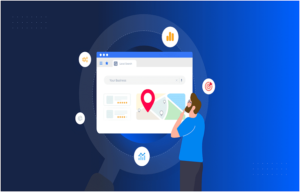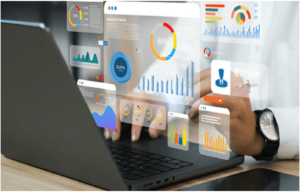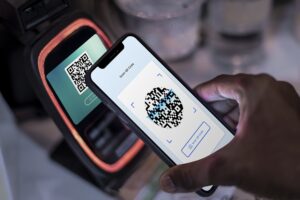New In-Store Retail Challenges: Adapting to Labour Shortages & Supply Chain Disruptions
4 min read
It feels like we were basking in the optimism of the post-pandemic world only a moment ago. As stores reopened and consumers cautiously ventured out, there was a collective hope that the retail sector would bounce back and life would regain a semblance of normalcy. But alas, our optimism was short-lived.
Just when we thought it was safe to re-enter the world of physical stores and resume business as usual, a wave of new challenges hit us, bringing many industries to their knees. Among these, the labour shortage looms as a significant impediment, unlike anything we’ve experienced recently.
Digging Deeper into the Labor Conundrum
Reports suggest approximately 10 million job openings in the United States, while 8.4 million people remain unemployed. While it’s easy to attribute this to the aftermath of the pandemic, it’s essential to recognise that a complex web of factors influences the labour shortage. The pandemic didn’t cause this crisis, but it did exacerbate an already tight labour market, especially for blue-collar workers.
Other contributing factors include the rise of e-commerce, demographic shifts, the evolution of the gig economy, limited access to childcare, and government pandemic relief and unemployment benefits. The labour shortage is a multifaceted issue with no quick fix in sight.
The Impact on In-Store Retail
The repercussions of this labour shortage are palpable in physical retail stores. From stocking shelves to managing checkouts, retailers need help maintaining day-to-day operations. Automation, robotics, and high-tech solutions have become go-to strategies to mitigate the shortage of human hands.
However, what about the shoppers who need assistance within the store? Even before these challenges emerged, finding in-store staff to answer questions and provide guidance was akin to playing “Where’s Waldo?” If you managed to find someone, chances are they didn’t work in that department, or you had to wait in line behind others with even more complex inquiries.
The need for more one-on-one interactions with store staff has plagued retail for years. As retailers aim to manage operational budgets, customer service often takes a back seat. With labour shortages, shoppers are left to fend for themselves, pushing some to turn to the convenience of online shopping, where questions can be answered from the comfort of home.
However, many still yearn to visit physical stores, to experience new products, and to engage with the environment. They crave assistance, inspiration, and entertainment while shopping in-store.
The Resurgence of In-Store Signage and Display
Here are five key reasons why in-store signage and display have become even more critical in the face of labour shortages and supply chain disruptions:
- Help Shoppers Find What They’re Looking for: Signage can guide shoppers to their desired products and suggest additional items they might need.
- Demonstrate What Packaging Doesn’t: Signage can explain product attributes and benefits in a way that packaging alone cannot.
- Promote Both In-Store and Online: Retailers can use signage to promote online shopping options when in-store products are out of stock.
- Quickly Pivot Offerings: Signage can be easily transformed to present alternatives for delayed or unavailable products.
- Surprise, Delight, Entertain, Reward: Engaging and entertaining signage can enhance the shopping experience and create a memorable, positive atmosphere.
The Power of Suggestion
Suggestion is a powerful tool in retail. Retail pioneers have long understood the importance of seizing the moment and maximising a shopper’s presence. Guiding shoppers with timely and relevant suggestions can drive sales and enhance the shopping experience.
Ikea, a leader in home furnishings, understands the psychology of shopper behaviour and uses creative and effective messaging to encourage purchases. For instance, they use food offerings to keep customers in-store longer, allowing them to make decisions without leaving.
Finding a Balance between Online and In-Store
Promoting online shopping while in-store has become essential. Supply chain disruptions often lead to limited in-store inventory, but the product might still be available online.
Retailers can communicate this to shoppers through pop-up boxes and QR codes, encouraging them to explore online options while in-store. This strategy also allows one to sign up for loyalty programs and receive discounts.
Conclusion: The Way Forward
The future of retail remains uncertain, with the supply chain facing unprecedented challenges. The retail sector will face its next test as we head into the holiday season. But it’s also a time for innovation and adaptation. Retailers that can respond with agility and insight will thrive in these changing times.
In this evolving landscape, in-store signage and display are not just tools for communication; they are your silent but highly effective salespeople. By reimagining their role and potential, you can ensure shoppers find what they need, discover new products, and have a delightful, entertaining, and rewarding shopping experience.
About Grozeo
The UK based retail technology service provider, Grozeo has been helping retailers and brands define their missions and translate them into the online world by creating a remarkable in-store experience for their customers.






